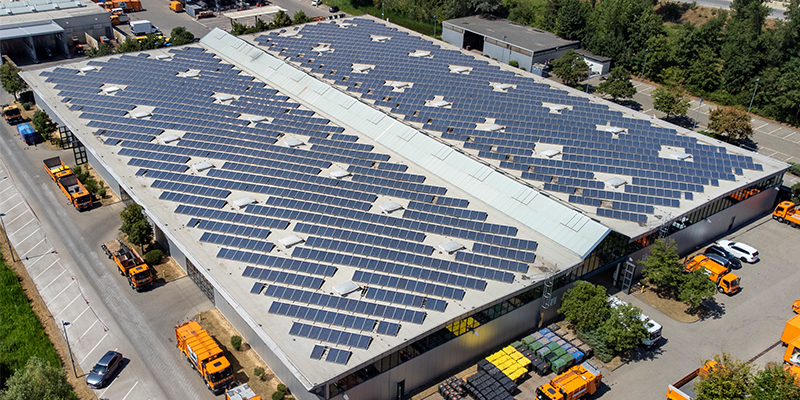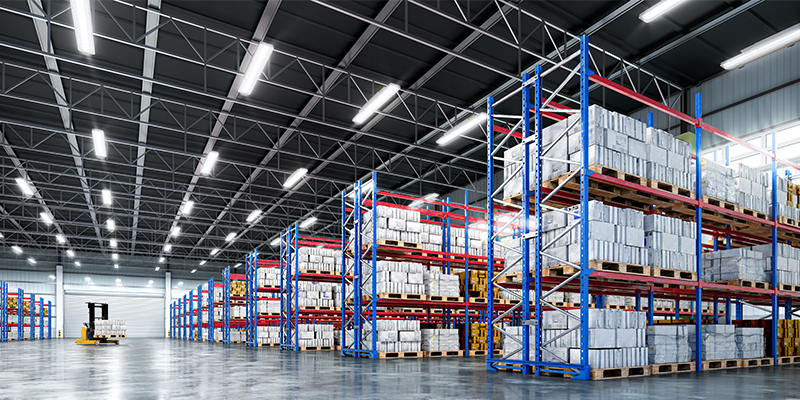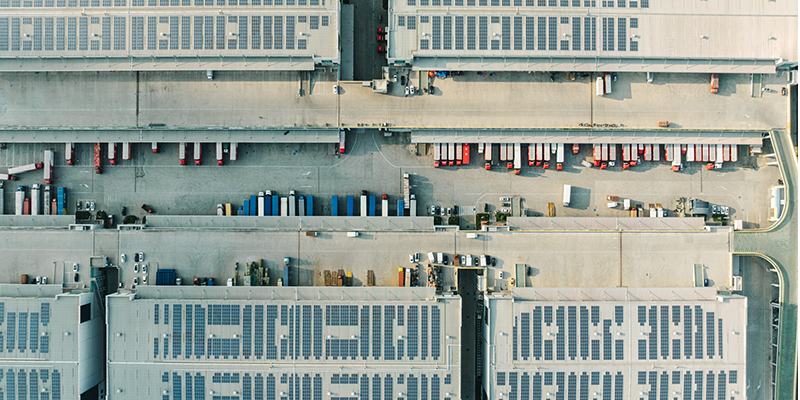By Kelly Hartog
“Two or three years ago, there were few sessions on sustainability or solar at this conference,” said Ryan McEvoy, principal and founder of GAIA, and a leader in sustainable real estate development, at NAIOP’s I.CON West conference this week in Los Angeles.
As sustainability grows in importance for industrial real estate, McEvoy moderated a panel on solar and battery storage in industrial with Josh Cox, senior vice president of development for Hillwood Investment Properties; Jacob Morgan, vice president of development at Prologis; Richard Bogan, director of capital projects sustainability development and construction at Rexford Industrial Realty; and Jonathan Port, founder of Permacity Foundation.
McEvoy noted that 92% of all new energy throughout the world is produced by solar; in the U.S., that figure is 66%, with California leading the way. “California solar continues to grow year over year, and on average, utilities in California are run on batteries roughly two hours a day,” he said.
Gas use has dropped by 40% in the state in the last two years, battery use is up by 200%, and wind, water and solar energies have increased 20%, McEvoy said, surmising that tenants want solar resources, and solar companies are making money. However, he added that there are both “carrots and sticks” with implementing solar use.
One of those “sticks” is the CALGreen Code, which has specific requirements for regulating energy efficiency, water efficiency and conservation. “For the last two years, incorporating solar and batteries into projects in California has been a requirement,” McEvoy noted.
Morgan stated that Prologis is meeting CALGreen standards by collaborating with clients, utility providers and local governments to prevent overproduction or unnecessary solar energy agreements.
Bogan said that Rexford has employed multiple sustainability strategies in new development. “We’re going above what Title 24 is requiring us to do,” he said, “We’re looking to provide 85% of energy to our future warehouse distribution tenants.”
A strategy the company has undertaken for several years is the Los Angeles Department of Water and Power (LADWP) Feed-in Tariff (FiT) program, a public-private partnership in which LADWP purchases renewable energy produced on-site at developments, with a price set on size and location.
Another “stick” is the need to obtain permits and approvals to install solar from local authorities. Cox said Hillwood has been navigating that process by partnering with CBRE Investment Management.
“We have a 500-acre NASCAR project in the Inland Empire West,” Cox shared. “We’re developing 6.5 million square feet of logistics facilities and, working with San Bernardino County, we’re offsetting our future tenants’ electricity demand with solar. We worked closely with Kinley Horn on having flexible development agreement language.”
That process has allowed Hillwood to obtain a shell certificate of occupancy, “and our solar is not tied to that. We’re required to install the solar within two years of tenant occupancy. So, it allows us…to figure out what size solar we want for that tenant to have time to work through the interconnect agreement and provide solar in a timely manner that works for us and the county. Keeping your [lease] language flexible is something that we found to be helpful.”
Moving on to the “carrot” in the business, McEvoy shared, “A majority of solar going up is utility-scale solar. That could mean community solar, or it could be in a FiT program.”
Port shared of Permacity’s collaboration with LADWP that, “FiT was the most powerful way to get the industrial property owners interested because it eliminated the moving parts. It’s one roof. Maximize the roof and sell all that power directly to the utility company. It recognizes the value of power from an industrial building. It’s inside the city network, it’s not subject to blockage from transmission.”
Balancing developer benefits with the needs of their customers also needs to be front and center in companies’ minds.
Morgan said Prologis’ biggest goal is simplification for the customer. “A lot of our customers are adding artificial intelligence to their buildings. Simplification of their manufacturing and all that leads to more energy use, so we’re kind of the energy as a service – being able to talk to these customers, work through programs, finding sustainable and efficient ways of adding solar or adding energy needs to their building, and working directly with those utilities.”

This post is brought to you by JLL, the social media and conference blog sponsor of NAIOP’s I.CON West 2025. Learn more about JLL at www.us.jll.com or www.jll.ca.








